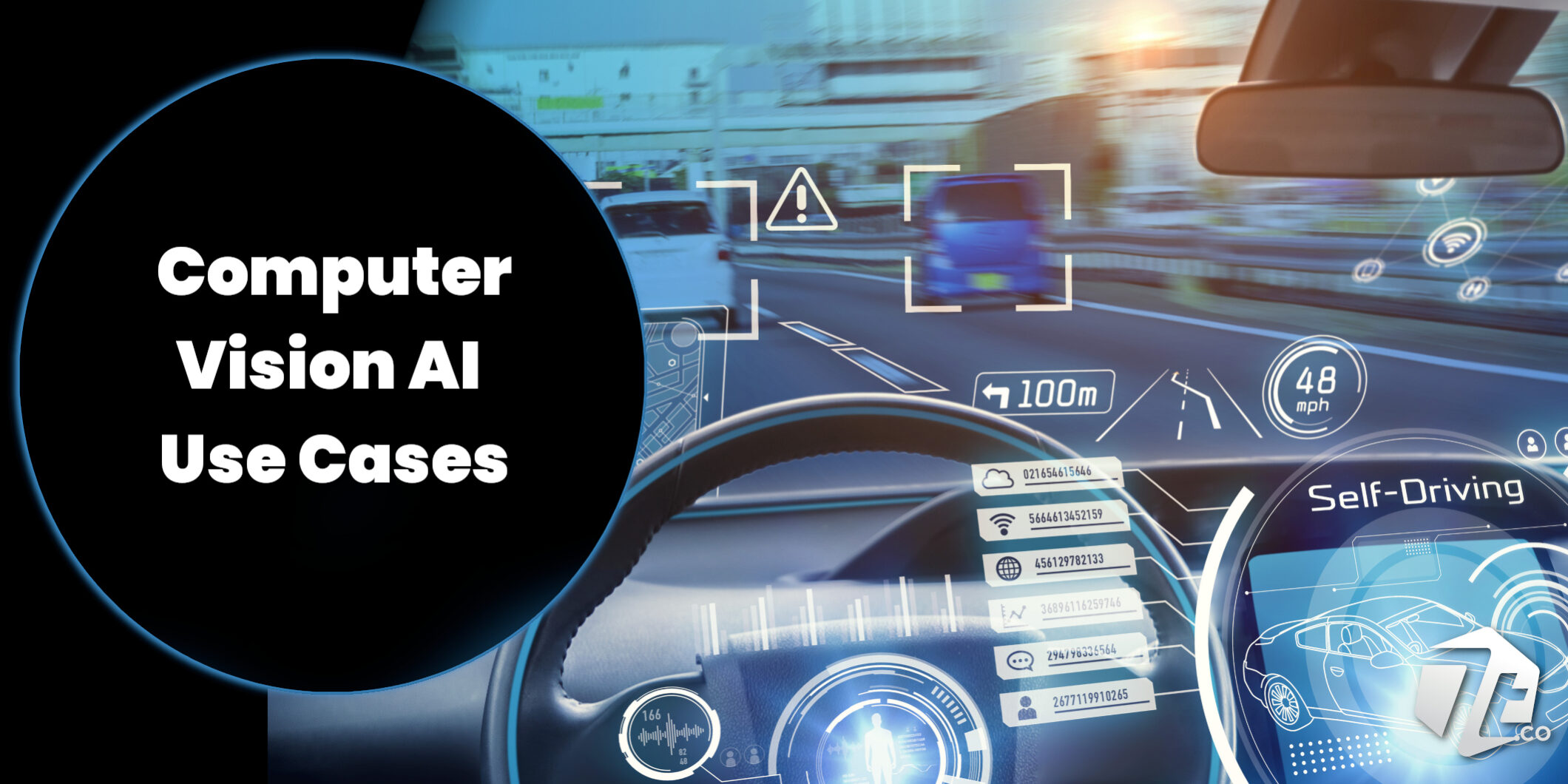Computer vision — also known as visual AI — is increasingly entering the mainstream alongside its parent technology, artificial intelligence or AI. Computer vision AI refers to the use of machine learning and neural network technology to evaluate and interpret the contents of non-text content, such as videos and images. Then, based upon the media’s evaluation, computer vision technology can be used to initiate a particular type of action.
The potential for this technology is virtually limitless, as evidenced by the multitude of computer vision AI use cases across many industries, where developers have deployed this innovation in a variety of different software platforms and mobile applications.
Computer Vision Use Case for Self-Driving Cars
A computer vision use case involving self-driving cars effectively drives home the potential for this AI technology. A self-driving car has multiple cameras and sensors that collect information that’s essential for safe vehicle operation. But that information is basically useless unless you have the ability to “understand” what’s happening in that real-time video feed.
Enter: computer vision, which is used to “understand” and interpret the information that’s captured by the vehicle’s cameras and sensors. Let’s say that an autonomous vehicle’s forward-facing camera captures footage of a pedestrian. Computer vision technology can identify the pedestrian as such and, in response, the system will initiate braking to ensure that the vehicle doesn’t collide with the person.
A Computer Vision Use Case for Facial Recognition & Emergency Response
We find another computer vision use case in facial recognition technology. An increasing number of municipalities have deployed facial recognition technology to work in tandem with their community camera feeds.

Similarly, a computer vision AI algorithm can be configured to identify specific behaviors and / or events that are associated with a particular type of crime or incident. For instance, cameras may capture footage of smoke, and as the saying goes, “Where there’s smoke, there’s fire.” The system can be configured to dispatch the fire department when certain conditions are met — such as the presence of smoke. Developers can also ensure that the system can reliably differentiate between a benign case of smoke emerging from a smokestack or chimney and an event that warrants an emergency response, such as smoke that’s arising from a structure, vehicle or grassy field. These are key traits that must be considered when firefighters are dispatched to a location.
A Manufacturing Computer Vision AI Use Case
Manufacturing plants are the site of yet another computer vision use case. Cameras can be placed at strategic points on a manufacturing line or assembly line, capturing images of parts or partially-assembled goods. Computer vision is used to analyze those images, identifying flaws, errors and other traits that may be indicative of a problem.
When an issue is identified, the affected item can be flagged or even pushed off the line for a manual review. This computer vision use case effectively depicts how this technology can play an instrumental role in an organization’s quality control efforts.
Visual AI Use Cases in a Variety of Industries
Manufacturing, the auto industry and law enforcement are just a few areas where you’ll find this innovative form of AI. Additional visual AI use cases can be found in the fields of sports medicine, physical therapy and agriculture, amongst others.
• Robotic automation and process automation – Computer vision is especially useful in cases where a process includes multiple variables that are used to determine the next steps. Video footage and still images are captured and analyzed to determine the appropriate next step in a process. The end result: a largely- or completely-automated process in a factory setting and beyond.
• Automated visual inspection in a manufacturing setting – Factories are using visual computing technology to inspect items on rapidly-moving production lines. Analysis algorithms can detect minute variations and irregularities on everything from electronics and automotive parts, to textiles, garments and beyond. Computer vision has the ability to improve quality control by leaps and bounds, while simultaneously cutting costs and overhead.
• Surveillance and security – Visual computing allows for highly-accurate facial recognition and behavioral analysis capabilities. This technology elevates security and surveillance to a whole new level. Airports, government buildings, public spaces and retail environments are all implementing technology with visual AI capabilities, These systems can issue intervention alerts if problematic body language and behavior is observed or if an individual is identified and found to be in an off-limits area.

• Agricultural analysis and process automation – Farmers are tasked with caring for thousands of plants that are spread across countless acres of land. Maximizing crop yield is a continuous challenge, but artificial intelligence is making that job easier by monitoring crop growth and performing agricultural analysis with computer vision AI. This technology is used for soil analysis and plant growth monitoring, amongst other things. The system can be configured to take action based upon sensor data and computer vision analysis. These processes may include watering schedule modifications, alterations to the harvest schedule, fertilizer application, pesticide application and adding specific nutrients to the soil.
The aforementioned use cases clearly illustrate how computer vision AI is commonly used in conjunction with process automation. For this reason, computer vision development projects tend to generate a very robust ROI thanks to improved efficiency and productivity. Computer vision AI effectively replicates a critical element of the process that was previously relegated to humans: the identification and analysis of an object / situation, followed by decision-making and a course of action.
At 7T, we specialize in AI development, including deployments that include computer vision and process automations. We take a problem-solving approach to artificial intelligence development, beginning with the analysis of a client’s challenges and pain points. Then, we work with the client to arrive at a development plan that serves to resolve those pain points, while simultaneously promoting productivity and profitability.
The potential for computer vision AI is exciting and 7T now offers artificial intelligence development solutions — including computer vision — to clients in all industries and business spaces. Our problem → solution approach to computer vision AI development has the potential to bring exceptional results, while also generating new, profitable opportunities for your organization.
7T is based in Dallas, with additional locations in Houston, and Charlotte, NC. But our clientele spans the globe. If you’re ready to learn more about computer vision development, contact 7T today.










